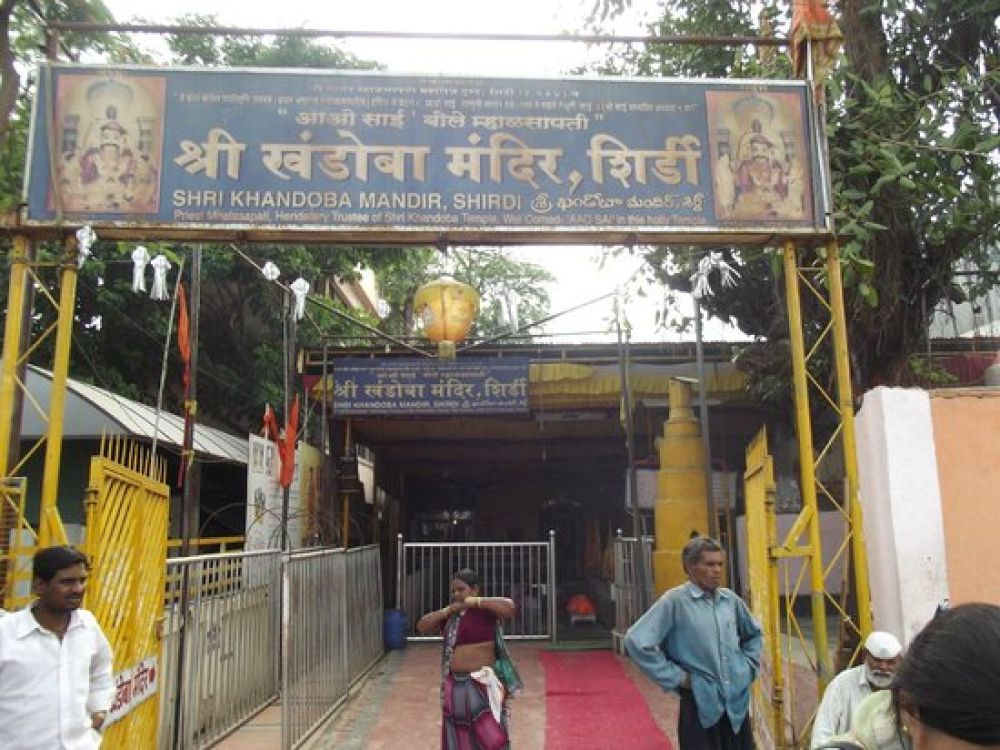

Khandoba Mandir, located in the sacred town of Shirdi in Maharashtra, India, holds a special place in the hearts of many pilgrims and tourists alike. Although the temple is less famous than the illustrious Sai Baba Temple, it is an important religious site with a unique history intimately tied to the story of Sai Baba himself.
The temple is dedicated to Lord Khandoba, a regional Hindu deity revered in Maharashtrian and Karnatakan folklore. Khandoba is believed to be the manifestation of Lord Shiva and is commonly depicted riding a horse with a sword in hand, often accompanied by his two wives. This particular temple in Shirdi came into prominence because of its association with Sai Baba, who is believed to have been welcomed near this temple by the temple priest, Mhalsapati, upon his arrival in Shirdi. It was Mhalsapati who addressed him as 'Sai', which later became the name by which he was known throughout the town and to his followers worldwide.
The tourism history of Khandoba Mandir is intrinsically linked with the growth of Shirdi as a major pilgrimage center in India. The transformation of this once sleepy village into a bustling spiritual hub started in the late 19th century with the arrival of Sai Baba. After Sai Baba’s mahasamadhi in 1918, his devotees constructed the famous Sai Baba Samadhi Mandir, which significantly increased the influx of tourists and pilgrims to Shirdi.
As more people visited Shirdi to pay homage to Sai Baba, Khandoba Mandir also began to attract attention, being the site where Sai Baba spent some of his early days. Over the years, the temple has become an essential stop for pilgrims visiting Shirdi, adding it to the itinerary of devotees who wish to experience the full spiritual journey of the area.
Visitors to the Khandoba Mandir can expect to witness traditional Maharashtrian temple architecture and participate in the aarti and offerings to Lord Khandoba. The temple is relatively small, but it radiates a historical charm and provides spiritual solace to its visitors. The temple remains an important part of the religious fabric of Shirdi, often serving as the starting point for the pilgrimage circuit in the town.
In recent years, with the advancement of technology, virtual tours and online darshans have become increasingly popular, especially during times when physical travel is restricted. Spiritual tourism in Shirdi, including visits to Khandoba Mandir, has been significantly enhanced through digital platforms, allowing devotees from across the globe to partake in the temple's offerings and rituals.
Moreover, the development of better infrastructure, such as improved road connectivity, a wide range of accommodation options, and enhanced facilities for tourists, has made Shirdi and its temples, including Khandoba Mandir, more accessible to a broader audience.
In conclusion, Khandoba Mandir's tourism history may not be as extensively documented as other larger temples, yet its significance in the spiritual journey of Sai Baba's followers is undeniable. As part of the larger narrative of Shirdi's ascendance as a center of pilgrimage, Khandoba Mandir represents the modest beginnings of a spiritual legacy that has grown to international acclaim.